Ask Ethan: How far is the edge of the universe from the farthest galaxy?

Studying the most distant galaxies can show us objects located billions of light years from us, but even with the perfect technology, the spatial gap between the most distant galaxy and the Big Bang will remain enormous.
Looking into the Universe, we see light everywhere, at all distances that our telescopes are able to look at. But at some point we will come across restrictions. One of them is superimposed by a cosmic structure that is being formed in the Universe: we can only see stars, galaxies, and the like, if they emit light. Without this, our telescopes are not able to see anything. Another limitation, when using types of astronomy that are not limited to light, is the limitation of how much of the universe has been available to us since the Big Bang. These two values may not be related to each other, and it is for this topic that the reader asks us a question:
Why is the redshift redshift in the range of 1000, although the largest redshift of any galaxy we saw is 11?
First, we must deal with what is happening in our Universe since the Big Bang.
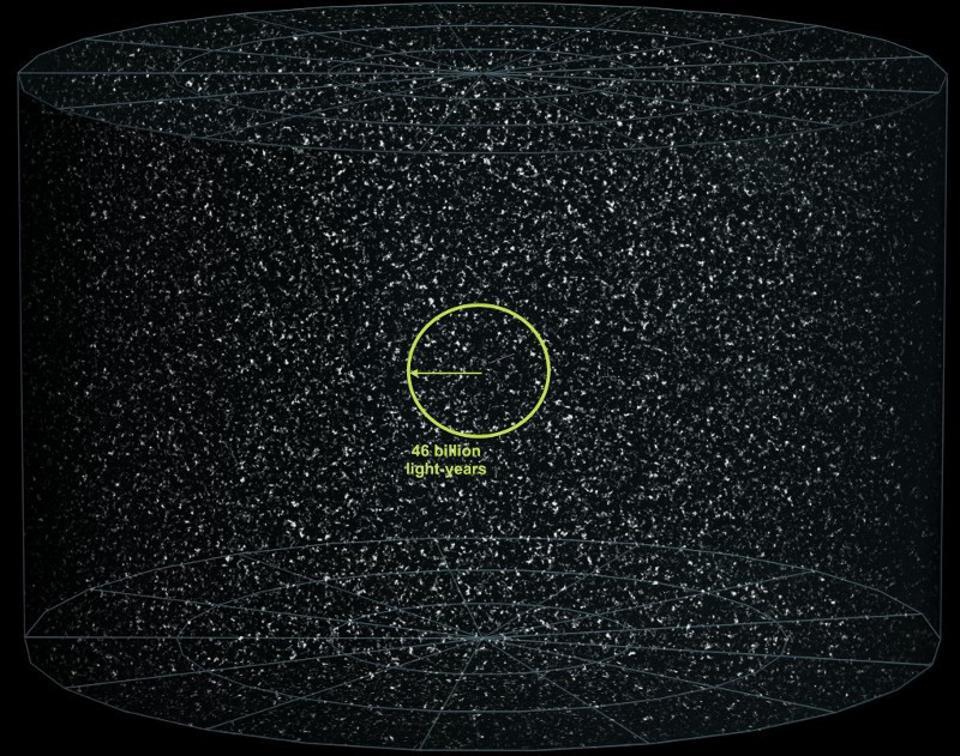
The observable Universe can stretch over 46 billion light-years in all directions from our point of view, but surely there are other parts of it that we do not observe, and perhaps they are even endless.
The whole set of what we know, see, observe and with what we interact, is called the "observable universe." Outside it, most likely, there are even more areas of the Universe, and over time we will have the opportunity to see more and more of these areas, when the light from distant objects finally reaches us after a space journey of billions of years. We can see what we see (and more, not less), thanks to a combination of three factors:
')
- A finite amount of time has passed since the Big Bang, 13.8 billion years.
- The speed of light, the maximum speed for any signal or particle moving in the Universe, is finite and constant.
- The fabric of space itself stretches and expands from the moment of the Big Bang.
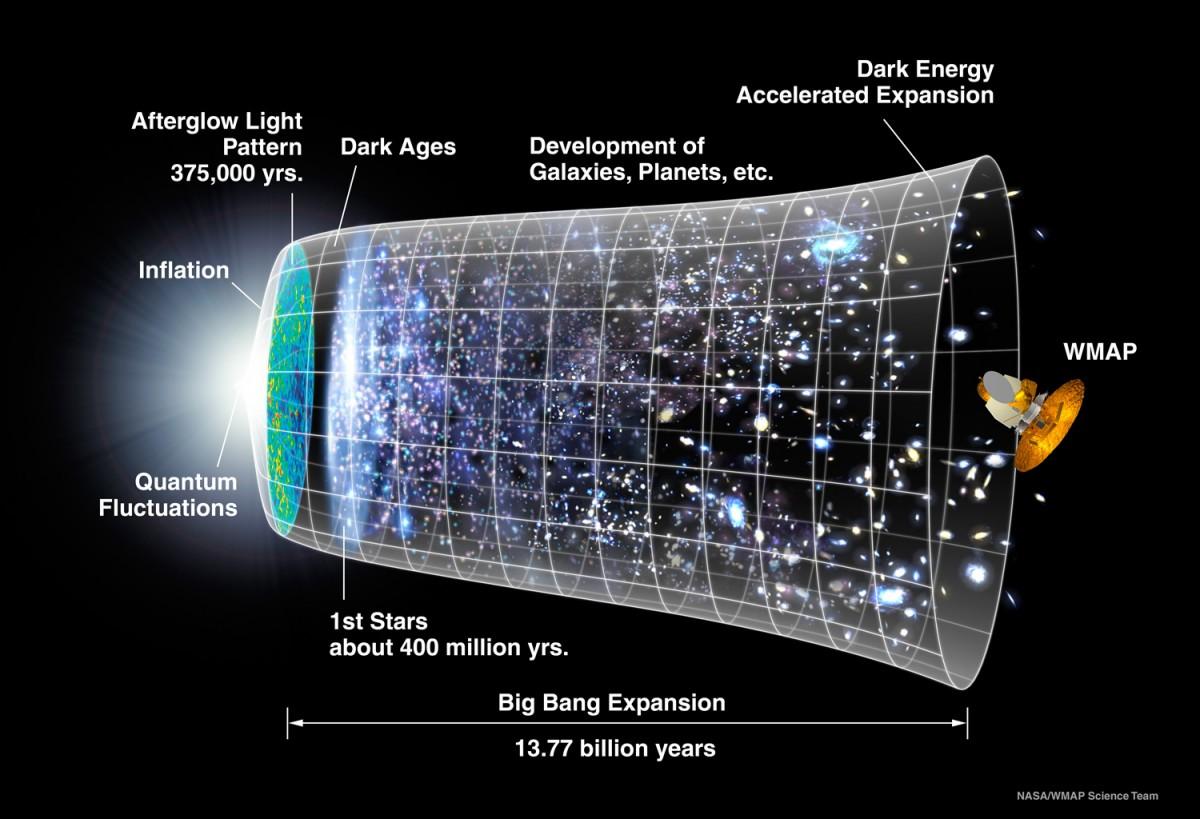
The timeline of the history of the observable universe
What we see today is the result of the work of these three factors, together with the initial distribution of matter and energy, working according to the laws of physics throughout the history of the Universe. If we want to find out what the Universe was at any earlier point in time, we just need to observe what it has become today, measure all the parameters associated with it, and calculate what it was in the past. For this we need a lot of observations and measurements, but the Einstein equations, albeit so difficult, are at least unambiguous. The deduced results are poured into two equations, known as the Friedmann equations , and each student studying cosmology faces the problem of solving them. But we, to be honest, managed to make some amazing measurements of the parameters of the Universe.

Looking towards the north pole of the Milky Way Galaxy, we can look into the depths of space. Hundreds of thousands of galaxies are marked up on this image, and each pixel is a separate galaxy.
We know how fast it is expanding today. We know the density of matter in any direction in which we are looking. We know how many structures are formed on all scales, from globular clusters to dwarf galaxies, from large galaxies to their groups, clusters and large-scale filiform structures. We know how much dark matter, dark energy, as well as smaller components, such as neutrinos, radiation, and even black holes, exist in the Universe. And only on the basis of this information, extrapolating back in time, we can calculate both the size of the Universe and the speed of its expansion at any moment of its cosmic history.

A logarithmic graph of the size of the observable universe versus age [translation mine / approx. transl.]
Today, our observable Universe extends for about 46.1 billion light years in all directions from our point of view. At such a distance is the starting point of an imaginary particle, which hit the road at the moment of the Big Bang, and traveling at the speed of light, would have arrived to us today, after 13.8 billion years. In principle, at this distance all gravitational waves generated by cosmic inflation were generated — the state that preceded the Big Bang, which tuned the Universe and provided all the initial conditions.

Gravitational waves created by cosmic inflation is the oldest signal of all that mankind could detect in principle. They were born at the end of cosmic inflation and at the very beginning of the hot Big Bang.
But other signals remained in the universe. When she was 380,000 years old, the residual radiation from the Big Bang ceased to scatter from free charged particles, since they formed neutral atoms. And these photons, after the formation of atoms, continue to experience a red shift along with the expansion of the Universe, and they can be seen today with a microwave or radio antenna / telescope. But due to the high rate of expansion of the Universe in the early stages, the “surface” that “glows” for us with this residual light — the cosmic microwave background — is only 45.2 billion light years from us. The distance from the beginning of the Universe to the place where the Universe was located in 380,000 years is obtained equal to 900 million light years!
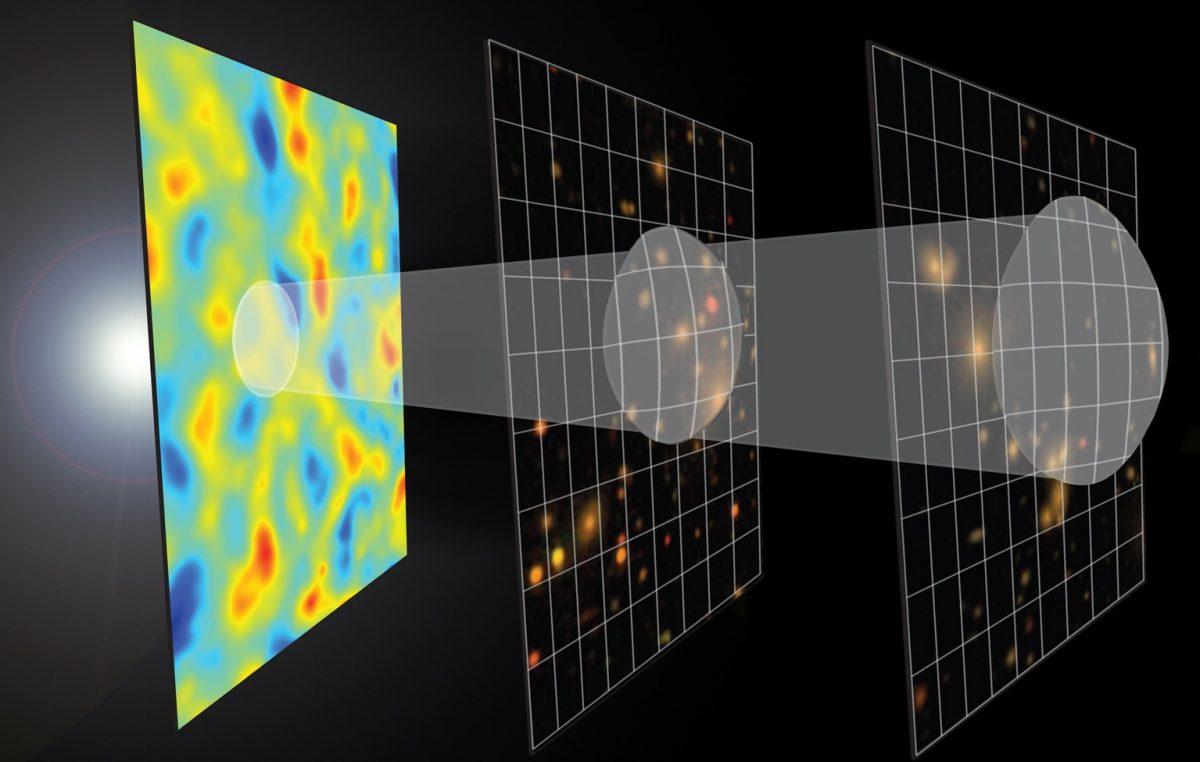
Cold fluctuations (blue) in relic radiation are not colder by themselves, but simply represent areas with enhanced gravitational attraction due to the increased density of matter. Hot (red) areas are hot, because the radiation in these regions lives in a less deep gravity well. Over time, denser regions are more likely to grow into stars, galaxies, and clusters, while less dense regions do so less likely.
It will take a lot of time before we find the most distant of all the open galaxies of the universe. Although simulations and calculations show that the very first stars could have formed in 50-100 million years from the beginning of the Universe, and the first galaxies in 200 million years, we hadn’t looked so far back (although there is hope that after launching next year James Webb space telescope we can do it!). At present, the galaxy has the space record, shown below, which existed when the universe was 400 million years old - this is only 3% of the current age. However, this galaxy, GN-z11, is only 32 billion light years away: it is about 14 billion light years from the “edge” of the observable Universe.

The most distant of all the detected galaxies: GN-z11, photo from the observation of GOODS-N, carried out by the Hubble telescope.
The reason for this is that at first the rate of expansion declined very quickly with time. By the time when the galaxy Gz-11 existed in the form we observed, the Universe was expanding 20 times faster than today. When relic radiation was emitted, the Universe expanded 20,000 times faster than today. At the time of the Big Bang, as far as we know, the Universe was expanding 10 36 times faster, or 1,000,000,000,000,000,000,000,000,000,000 times faster than today. Over time, the expansion rate of the universe has greatly decreased.
And for us it is very good! The balance between the primary rate of expansion and the total amount of energy in the Universe in all its forms is ideally observed, up to the error of our observations. If in the Universe there was at least a little more matter or radiation in the early stages, it would collapse back billions of years ago, and we would not exist. If there were too little matter or radiation in the early stages of the universe, it would expand so quickly that particles would not be able to meet each other to even form atoms, not to mention more complex structures such as galaxies, stars, planets and people. . The cosmic story that the universe tells us is a story of extreme balance, thanks to which we exist.
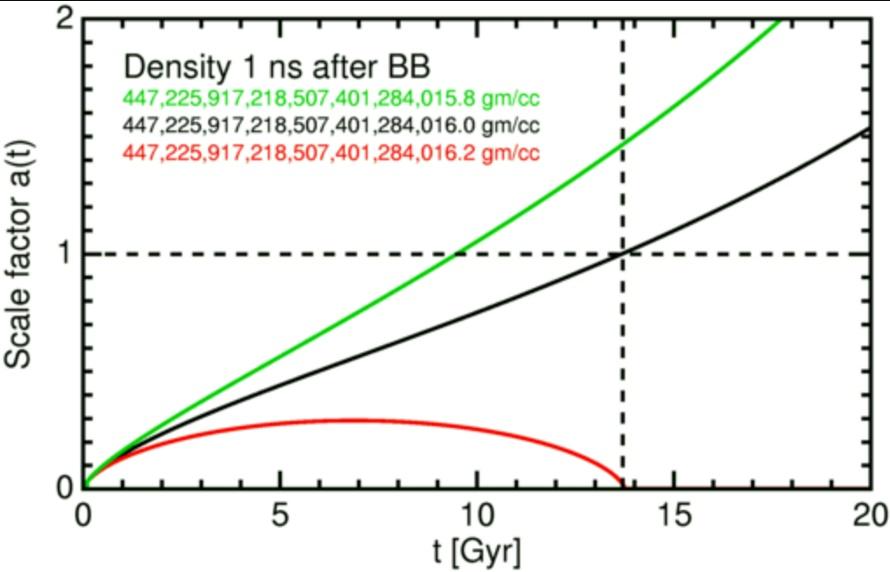
The intricate balance between the rate of expansion and the total density of the Universe is so fragile that even a deviation of 0.00000000001% in any direction would make the Universe completely uninhabitable for any life, stars or even planets at any given time.
If the best of our modern theories are true, then the first real galaxies should have been formed at the age of 120 to 210 Ma. This corresponds to a distance of 35-37 billion light years from us to them, and a distance of 9-11 billion light years from the farthest galaxy to the edge of the observable Universe. This is extremely far away, and speaks of one surprising fact: the Universe has expanded extremely rapidly in the early stages, and today it is expanding much more slowly. 1% of the age of the Universe is responsible for 20% of its total expansion!
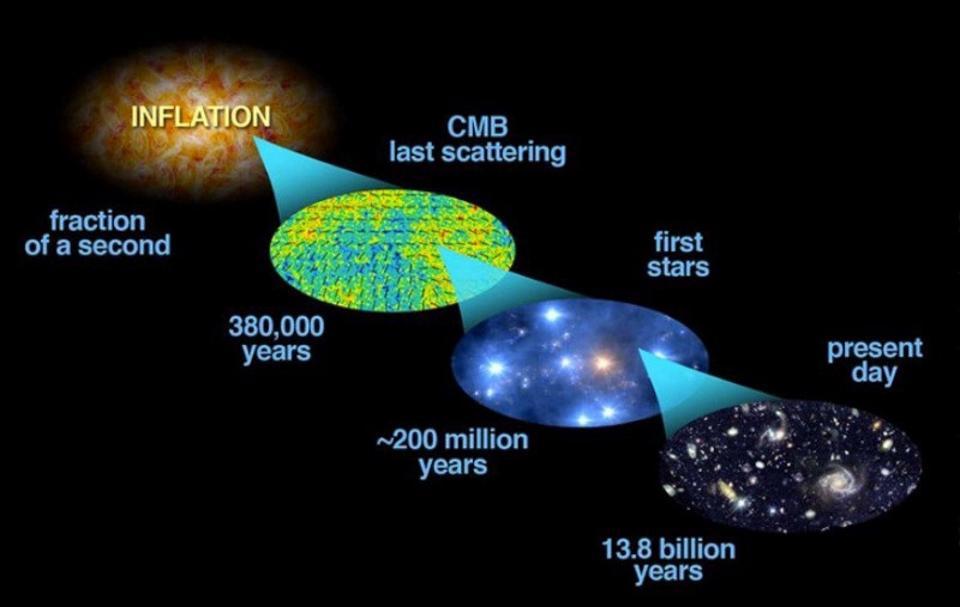
The history of the universe is full of fantastic events, but since inflation ended and the Big Bang occurred, the expansion speed has plummeted and slows down while the density continues to decrease.
The expansion of the Universe stretches the wavelength of light (and is responsible for the redshift we see), and the great speed of this expansion is responsible for the large distance between the microwave background and the farthest galaxy. But the size of the universe today testifies to something extraordinary: the incredible effects that occurred over time. Over time, the Universe will continue to expand more and more, and by the time its age is ten times greater than today, the distances have increased so much that we will not see any galaxies except for members of our local group, even with a telescope equivalent to Hubble. Enjoy all that is visible today, the great diversity of what is present on all cosmic scales. It will not exist forever!
Ethan Siegel - astrophysicist, popularizer of science, blog Starts With A Bang! He wrote the books Beyond The Galaxy , and Treknologiya: Star Trek Science [ Treknology ].
Source: https://habr.com/ru/post/371093/
All Articles